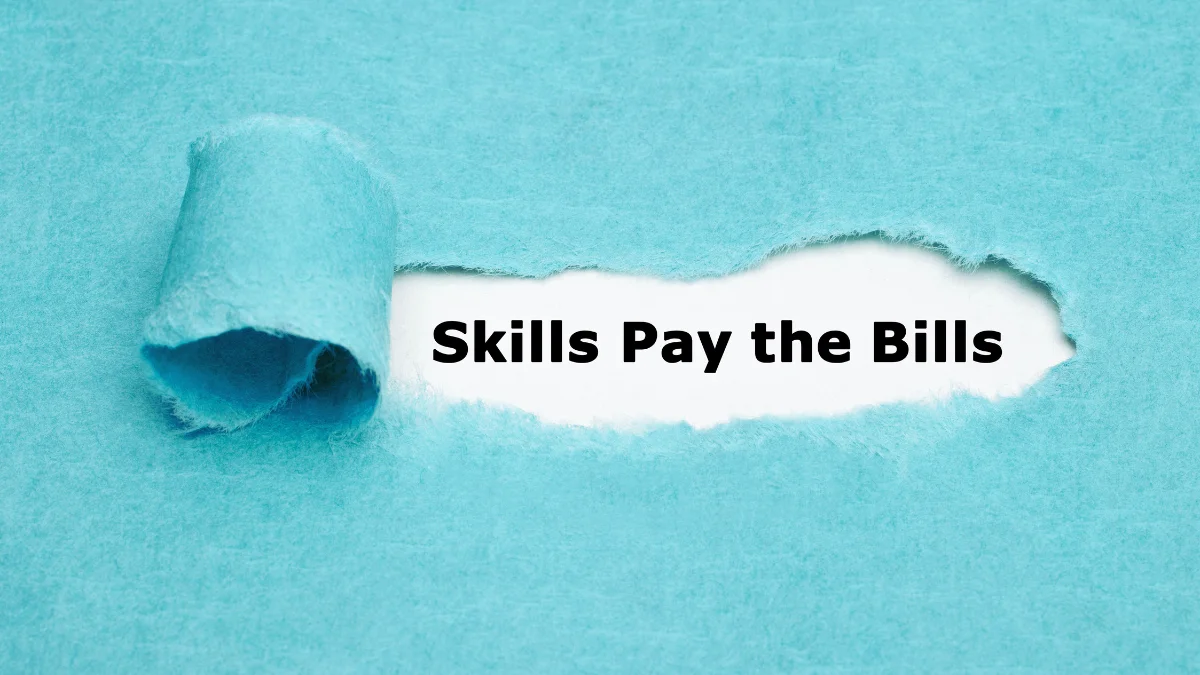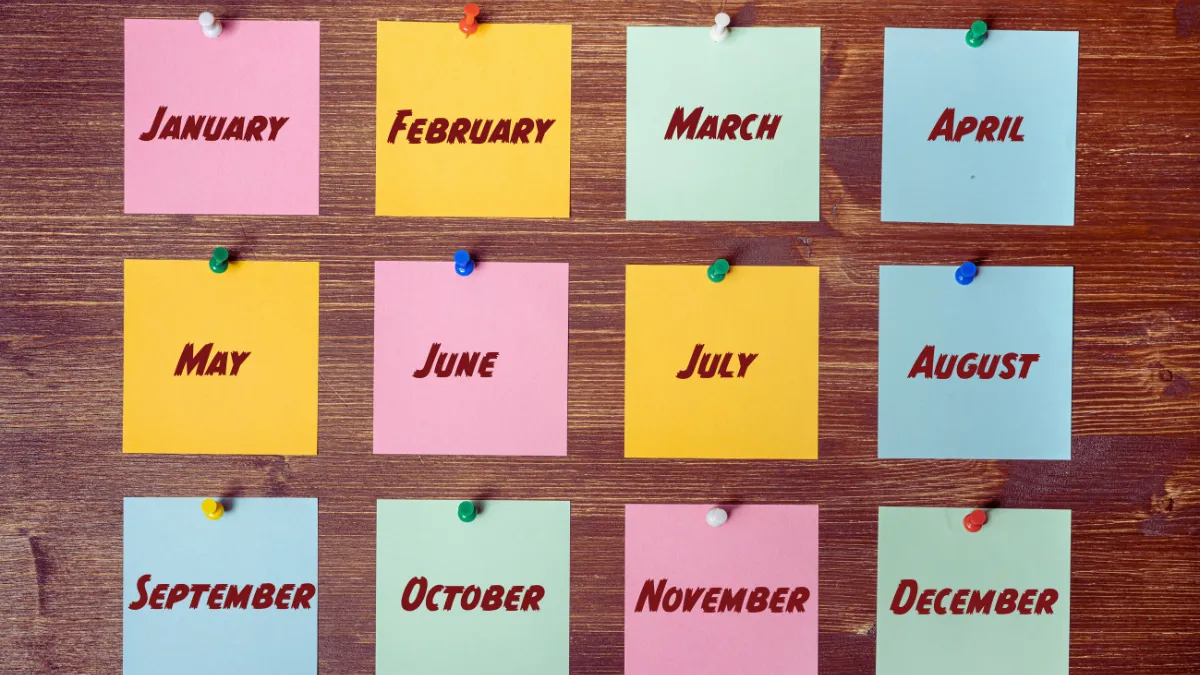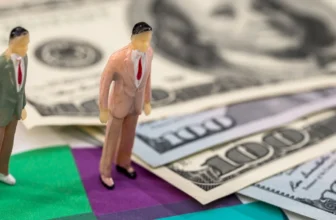I made $75,000 a year.
And I felt broke.
Not “can’t pay rent” broke. But “can’t save money, can’t plan for the future, constantly stressed about bills” broke. Every raise got eaten by inflation. Every bonus disappeared into car repairs or medical bills.
I was 29 years old and making more money than most Americans. But I couldn’t get ahead.
That’s the $75K trap. You earn enough to disqualify you from help. But not enough to feel secure. You’re stuck in the middle, and the middle keeps shrinking.
Here’s how I doubled my income in 18 months. No trust fund. No lucky break. Just seven strategies that actually worked.
The Wake-Up Call: Why $75K Isn’t Enough Anymore

Let me show you the math that broke me.
My gross pay: $75,000. Sounds good, right?
After taxes and 401k: $56,000 take-home. That’s $4,667 per month.
Here’s where it went:
- Rent: $1,400
- Student loans: $450
- Car payment: $380
- Insurance: $200
- Utilities: $150
- Food: $500
- Gas: $200
That’s $3,280 for basics. I had $1,387 left for everything else. Savings, entertainment, emergencies, life.
One car repair wiped out a month of savings. One medical bill put me back to zero.
According to the Pew Research Center, 52% of U.S. adults lived in middle-income households in 2022. I was right there with them. Earning the median. Feeling stuck.
The median household income is $74,580, and to reach upper-middle-class status, you need between $117,000-$150,000, depending on where you live.
I needed to almost double my income. At my company’s 3% annual raises, that would take 23 years.
I was 29. I couldn’t wait until I was 52.
So I made a plan. Give myself 18 months to hit $150K. Go all in. See what happens.
Here’s what actually worked.
Strategy 1: Learn Skills That Pay Real Money

Forget four-year degrees. I didn’t have time or $100,000.
I needed skills that companies would pay for right now.
I chose three skills:
- Digital marketing
- Data analysis
- Basic coding
Why these three? Because I saw job postings paying $90K-120K for people who could do all three.
Here’s what I actually did:
Month 1-2: Digital marketing
- Google Digital Garage (free)
- HubSpot Academy (free)
- One Udemy course on sale ($15)
- Time spent: 15 hours per week
Month 2-3: Data analysis
- Excel tutorials on YouTube (free)
- DataCamp free tier (free)
- Later upgraded to paid: $49/month
- Time spent: 12 hours per week
Month 3-4: Coding basics
- freeCodeCamp (free)
- Built three simple websites
- Time spent: 20 hours per week
Total money spent: $350 in four months.
But here’s the important part. I didn’t just learn. I built things. I created a portfolio website. I analyzed free datasets and made charts. I built fake marketing campaigns.
Because employers don’t care about certificates. They care about what you can do.
A study by Course Report found that 72% of coding bootcamp graduates find jobs in their field within six months of graduation, and the average salary increase exceeds $25,000 annually, with 46% of graduates seeing jumps over 50%.
I wasn’t doing a boot camp. But the lesson was clear. New skills = higher pay. Fast.
By month 4, I had built 10 portfolio pieces. None of them was perfect. But they showed I could do the work.
Strategy 2: Start Side Hustles That Actually Scale

I tried Uber first. Made $14 an hour after gas. That’s not escaping anything.
I needed a side income that could grow. Here’s what worked:
Side Hustle #1: Freelance digital marketing
Started on Upwork in month 5.
My first project paid $300. I spent 20 hours on it. That’s $15 an hour. Terrible.
But I learned. I got faster. I raised my rates.
Month 5: $600 Month 8: $2,200 Month 12: $2,500
I worked about 10 hours per week by month 12. That’s $62.50 per hour.
The secret? I specialized. I didn’t do “general marketing.” I did “email marketing for small e-commerce brands.” Specific pays more.
Side Hustle #2: Online course
By month 6, I knew enough to teach beginners.
I made a course: “Digital Marketing Basics for Small Businesses”
Put it on Teachable. Charged $79.
Month 6: $400 (5 students) Month 12: $1,200 (15 students)
The beautiful part? I made it once. It sold while I slept.
Side Hustle #3: YouTube channel
I documented everything I was learning. Posted weekly.
It grew slowly. But the YouTube Partner Program requires 1,000 subscribers and 4,000 watch hours yearly to start earning from ads.
I hit that in month 8.
Month 8: $150 Month 12: $600 Month 18: $800
Total side income by month 12: $4,300 per month. That’s $51,600 per year.
Combined with my $75K salary, I was already at $126,600. That’s a 69% increase.
But I wasn’t done.
Strategy 3: Negotiate Like Your Future Depends On It (Because It Does)

Here’s what nobody tells you about salary negotiation.
Your company will pay you as little as you’ll accept.
That doesn’t mean. It’s business.
Negotiation starts at the point of hire – recruiters often start with low offers expecting candidates to negotiate, and those who don’t ask leave value on the table.
I had been leaving money on the table for years.
In month 13, I decided to fix that.
Step 1: I did my homework
I spent two weeks researching. I used Glassdoor, LinkedIn Salary, and Payscale. I found that people with my new skills were making $95K-120K.
I was making $75K. I was underpaid by at least $20K.
Step 2: I documented everything
I made a list:
- Projects I completed
- Money I saved the company
- New skills I brought
- Problems I solved
I had numbers. Real numbers. “$50,000 saved annually by improving our email conversion rate by 2.3%.”
Step 3: I practiced
I called my best friend. We role-played the conversation five times. I got comfortable saying big numbers out loud.
“I’m looking for $105,000.”
Say it enough times, and it stops feeling scary.
Step 4: I asked
I scheduled a meeting with my boss. Mid-afternoon on a Tuesday. Not Monday morning (he’s stressed). Not Friday afternoon (he’s checked out).
I made my case. I showed my numbers. I asked for $105K.
He offered $88K.
That’s a 17% raise. Not bad. But not enough.
Step 5: I got competing offers
While negotiating internally, I applied to other companies.
I got three offers:
- $108K
- $115K
- $125K
I took the middle offer back to my company. They couldn’t match.
So I left.
And then I negotiated with the new company using the $125K offer as leverage.
Final offer: $130K base + $5K signing bonus.
From $75K to $130K. That’s a 73% increase.
Strategy 4: Automate Everything (So You Can Focus on Growing)

Manual money management relies on weak willpower, memory, and time – your system will break without automation.
I automated everything in month 2. It took three hours. It changed my life.
Here’s my system:
Every paycheck, money auto-splits:
- 15% to 401k
- 12.5% to Roth IRA
- 7.5% to HSA
- 35% of the bills
- 20% to living expenses
- 10% to fun money
I never see most of my money. It goes where it needs to go.
No decisions. No willpower needed. No forgetting.
By month 18:
- My 401k: $28,000
- My Roth IRA: $12,600
- My HSA: $7,740
- My emergency fund: $18,000
Total: $66,340 in savings.
I started at negative $8,000 (debt). In 18 months, I grew my net worth by $74,340.
The tools I used:
- My bank’s bill pay (free)
- Vanguard auto-invest (free)
- Personal Capital to track it all (free)
Cost: $0 Time: 3 hours setup, 30 minutes monthly check-ins Result: I built wealth on autopilot
Strategy 5: Change Jobs (It’s the Fastest Raise You’ll Get)

Staying loyal to your company costs you money.
Internal raises: 3-5% per year, maybe 10% for a promotion. Switching jobs: 20-50% raise, sometimes more
I stayed too long at my first company. I thought loyalty mattered. It doesn’t. Not financially.
When I finally left, here’s how it went:
Month 13-14: Built my portfolio
I took all my side hustle work. I made it pretty. I put it on a simple website.
Three case studies showing real results I got for clients.
Month 15: Started applying
I applied to 40 companies in four weeks. That’s two per day.
I got:
- 15 phone screens
- 8 first interviews
- 5 final rounds
- 3 offers
Month 16: Choose the best offer
Not just the highest salary. I looked at:
- Growth potential
- Company culture
- Learning opportunities
- Work-life balance
I picked the $130K offer over the $125K offer because the company was growing fast and the role had more responsibility.
The secret sauce?
I combined my old experience with my new skills. That made me rare.
Most marketing people can’t analyze data. Most data people can’t market. I could do both.
Rare skills = premium pay.
Strategy 6: Cut Your Taxes Legally (Keep More of What You Earn)

Making more money is great. Keeping more money is better.
In month 10, I spent $500 to hire a CPA. Best money I ever spent.
Here’s what I learned:
For 2025, you can contribute up to $23,500 to a 401 (k) ($31,000 if you’re 50+), up to $7,000 to an IRA ($8,000 if you’re 50+), and up to $4,300 to an HSA as an individual ($8,550 for families, plus $1,000 catch-up if 55+).
I maxed everything out.
My tax savings:
- 401k max: Saved $5,640 in taxes (24% bracket)
- HSA max: Saved $1,032 in taxes
- Business expenses for side hustle: Saved $1,296 in taxes
Total annual tax savings: $7,968
Plus, I formed an LLC for my freelance work. This let me deduce:
- Home office: $200/month
- Internet: $50/month
- Phone: $40/month
- Software: $100/month
- Equipment: $1,200/year
Another $800 in tax savings.
Total: $8,768 saved per year in taxes.
That’s $730 per month I keep instead of giving to the IRS.
Strategy 7: Think Different About Money

This is the invisible strategy. The one nobody talks about.
I had to change how I thought about money.
Old me: “I can’t afford that course.” New me: “What’s the return on investment?”
That $350 I spent on learning? It led to a $55,000 salary increase. That’s a 15,614% return.
Old me: “I should save money and avoid risk.” New me: “I should invest in myself aggressively.”
I spent $3,500 on learning and tools in 18 months. I increased my income by $73,000. Worth it.
Old me: “I’m not a six-figure person.” New me: “I create six figures worth of value.”
Language matters. I started saying “I earn” instead of “I make.” Small shift. Big impact on confidence.
I read five books that changed everything:
- “The Millionaire Fastlane” by MJ DeMarco
- “Never Split the Difference” by Chris Voss
- “$100M Offers” by Alex Hormozi
- “Atomic Habits” by James Clear
- “So Good They Can’t Ignore You” by Cal Newport
Total cost: $75 Impact: Changed how I saw wealth building
I also found an accountability partner. Someone making $200K. We talked weekly. He showed me what was possible.
The Real Numbers: Month by Month

Let me show you exactly how my income grew:
Months 1-4: Learning phase
- Income: $75,000 base ($6,250/month)
- Side income: $0
- Hours worked: 60-70/week
- Focus: Build skills
Months 5-8: Side hustle launch
- Income: $75,000 base
- Side income: $600 → $2,800/month
- Hours worked: 55-60/week
- Focus: Scale side income
Months 9-12: Optimization
- Income: $75,000 base
- Side income: $3,500 → $4,300/month
- Hours worked: 45-50/week
- Focus: Efficiency and job search prep
Months 13-15: Transition
- Income: $75,000 → $88,000 base (internal raise)
- Side income: $4,000/month
- Hours worked: 50-55/week
- Focus: Job applications
Months 16-18: The jump
- Income: $130,000 new base
- Side income: $1,500/month (scaled back)
- Hours worked: 50/week
- Focus: New role success
Final numbers:
- Month 0: $75,000/year
- Month 18: $148,000/year (base + side income)
- Increase: 97%
- Net worth: Went from -$8,000 to +$67,000
What I’d Do Differently

I made mistakes. Here are the big ones:
Mistake 1: I waited too long to apply for new jobs
I should have started applying in month 6. Instead, I waited until month 13. That cost me six months of a higher salary. About $30,000 left on the table.
Mistake 2: I tried dropshipping
I wasted three months and $1,200 on dropshipping. It didn’t match my skills. I should have stuck to service-based side hustles from the start.
Mistake 3: I burned out
In month 9, I crashed. I was working 70-hour weeks. I couldn’t do it anymore. I took two weeks to recover. I lost momentum.
The lesson? Sustainable beats fast. Work 50 hours consistently, not 70 hours until you break.
Your Action Plan: Start This Week

Here’s what to do right now:
This week:
- Calculate your exact take-home pay
- Track every dollar you spend for three days
- Pick one high-income skill to learn
- Set up automatic savings of $100/month
This month:
- Start a free course in your chosen skill
- Create one portfolio piece (even if it’s practice)
- Apply to one freelance platform
- Research salary ranges for your role + new skills
Months 2-3:
- Complete your first course
- Build 2-3 more portfolio pieces
- Apply for your first 10 side hustle gigs
- Increase savings by 5%
Months 4-6:
- Launch your first side hustle
- Target $500-1,500 in extra income
- Start documenting wins at your day job
- Join one online community in your field
Months 7-12:
- Scale side income to $2,000-3,000/month
- Build your case for a raise
- Start updating your resume
- Network with people in your target roles
Months 13-18:
- Negotiate internally first
- Apply to external companies
- Target 40-60% pay increase
- Make the jump






